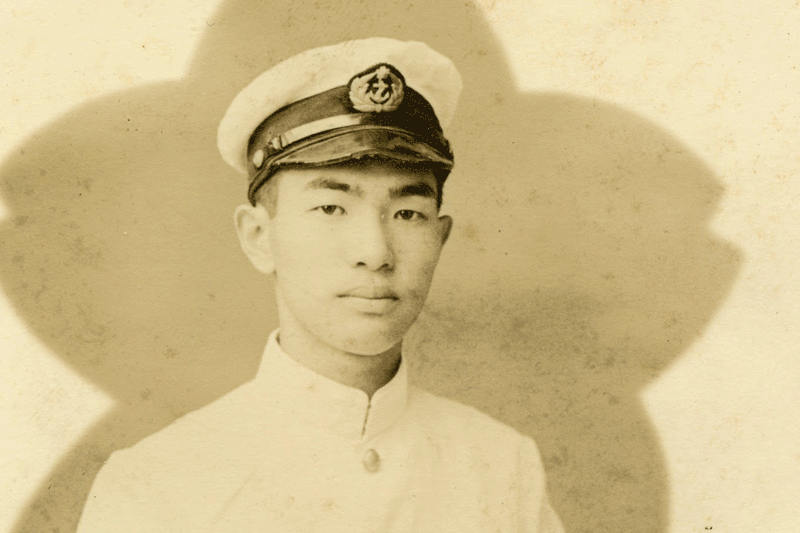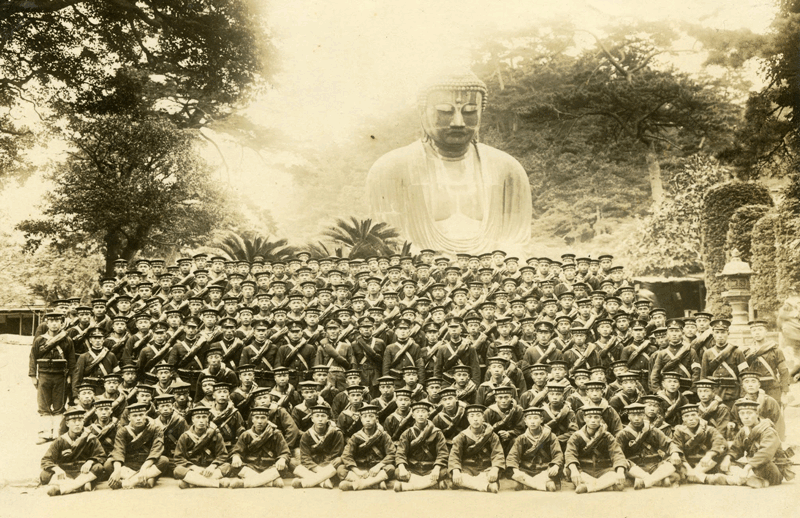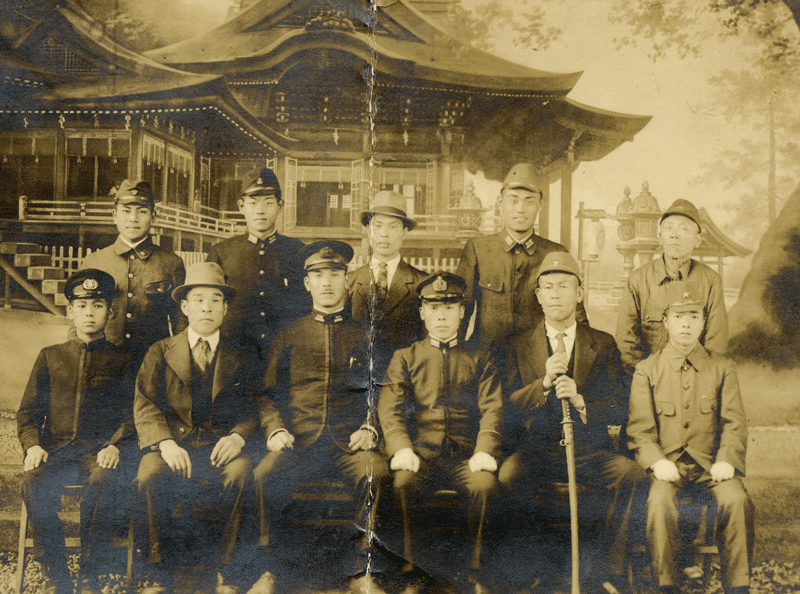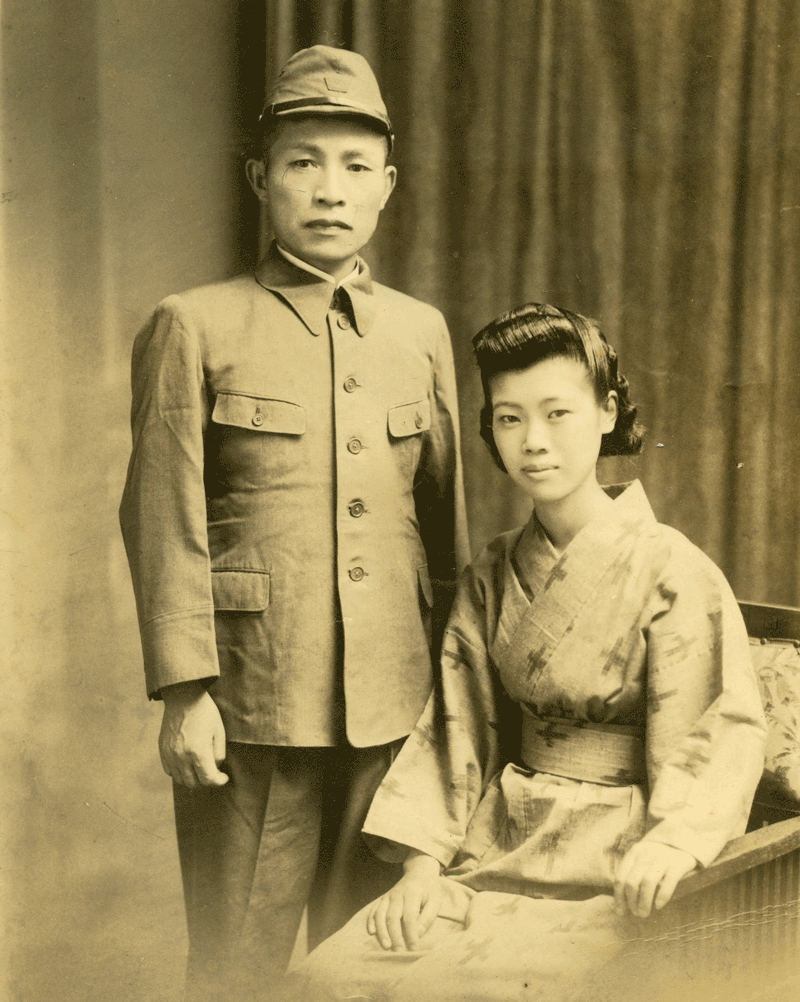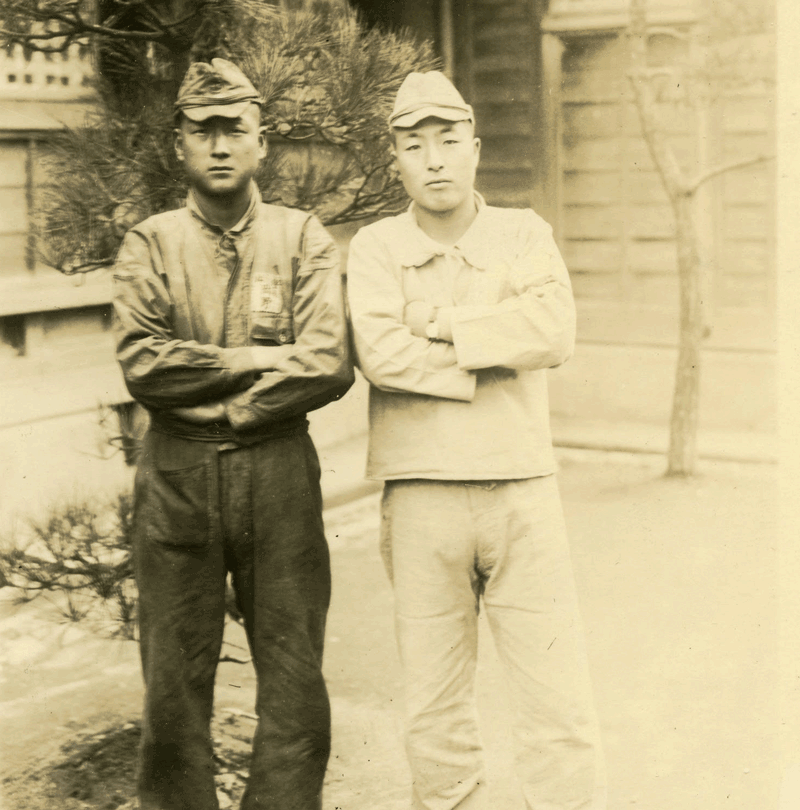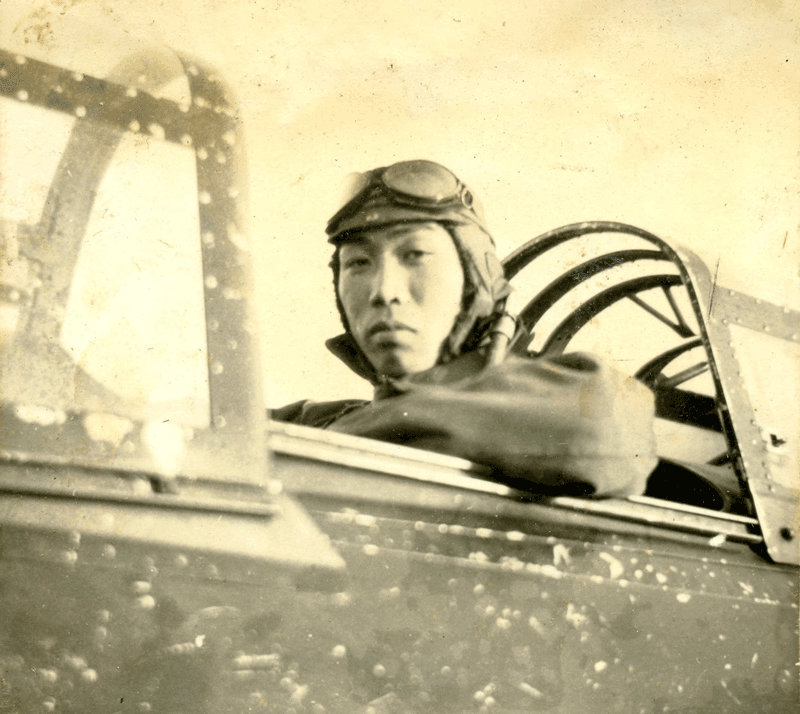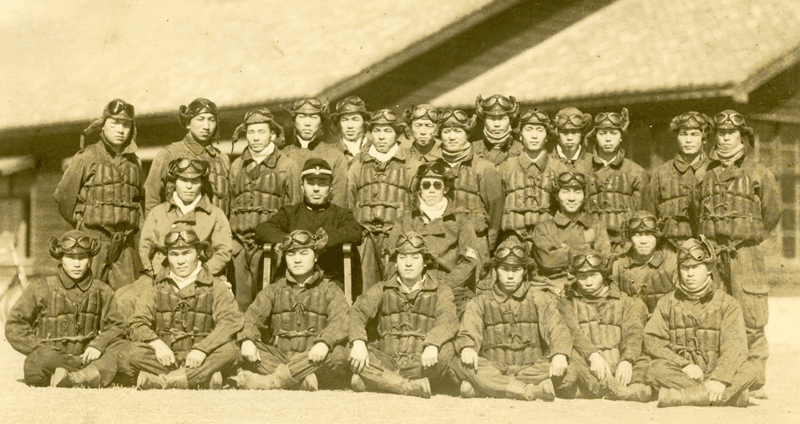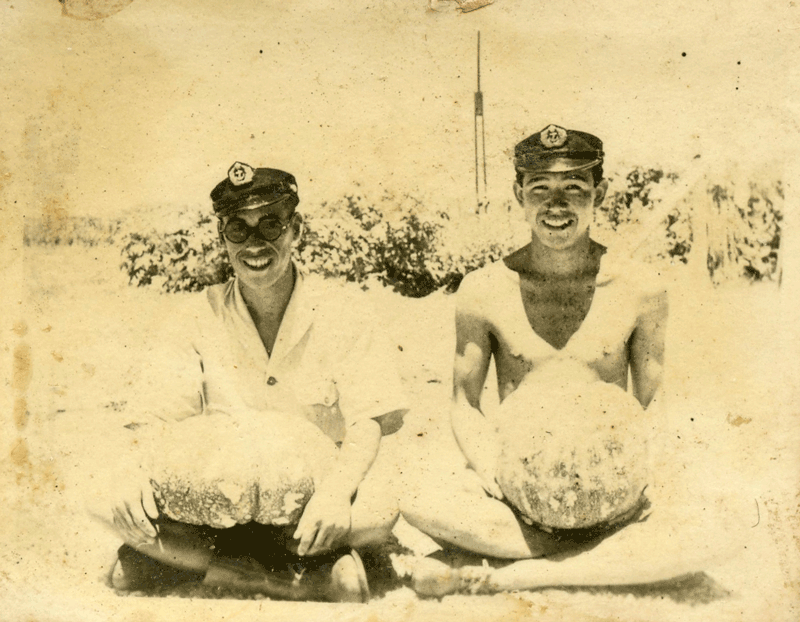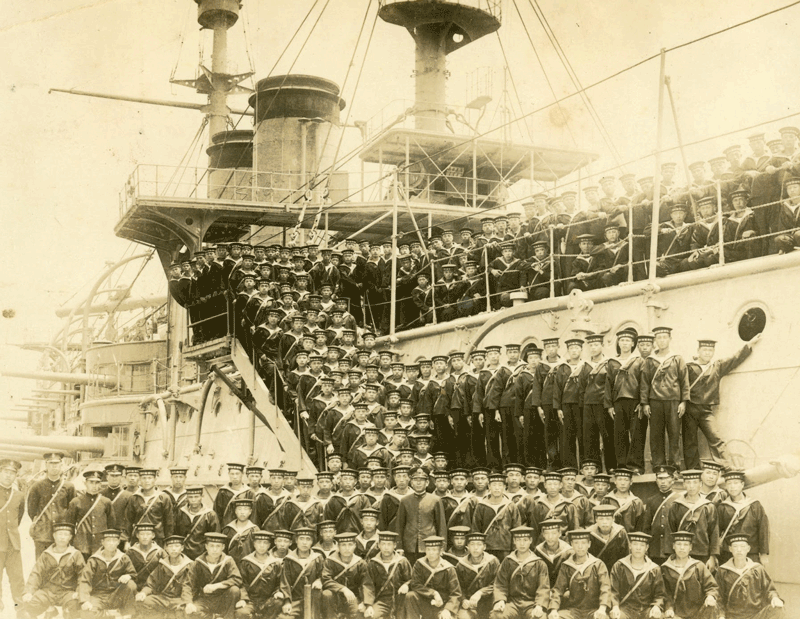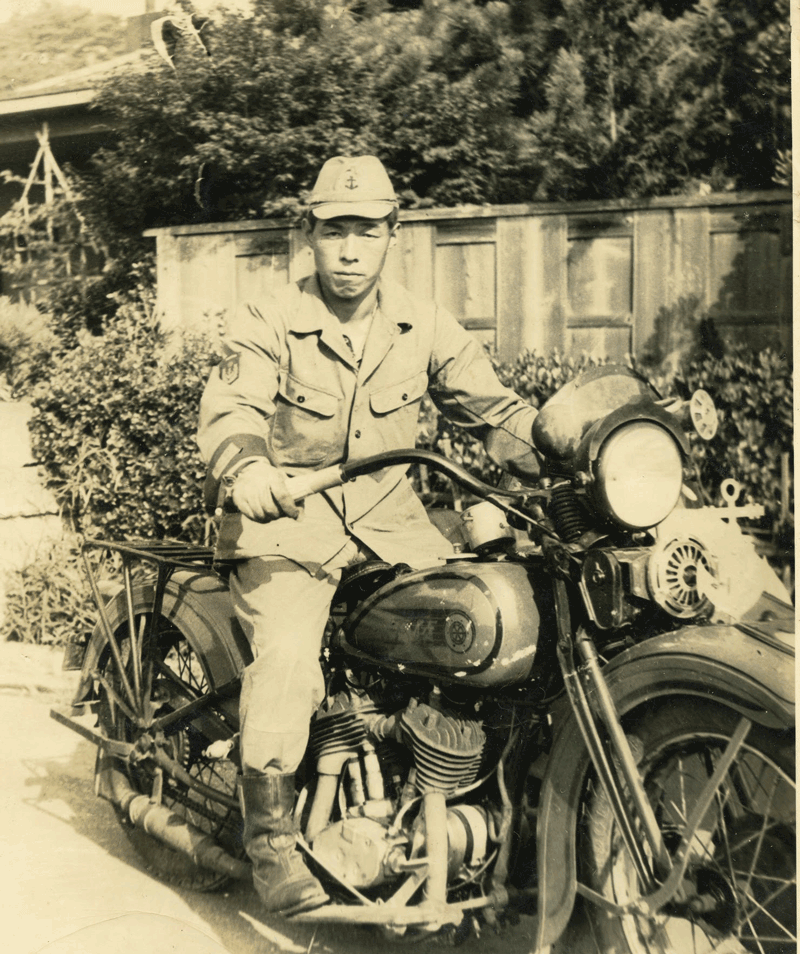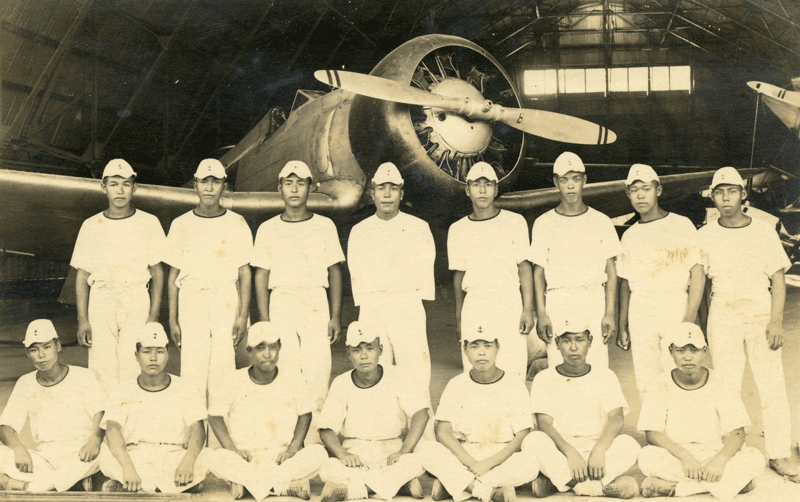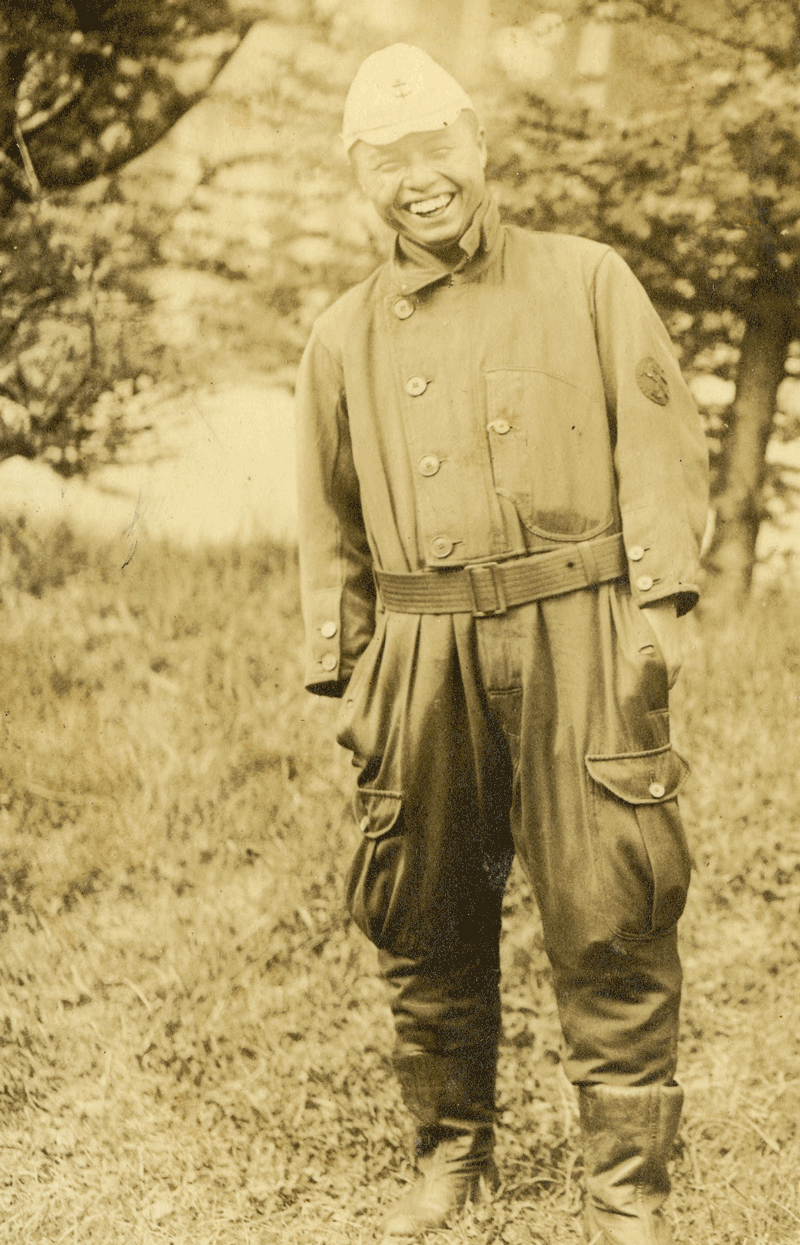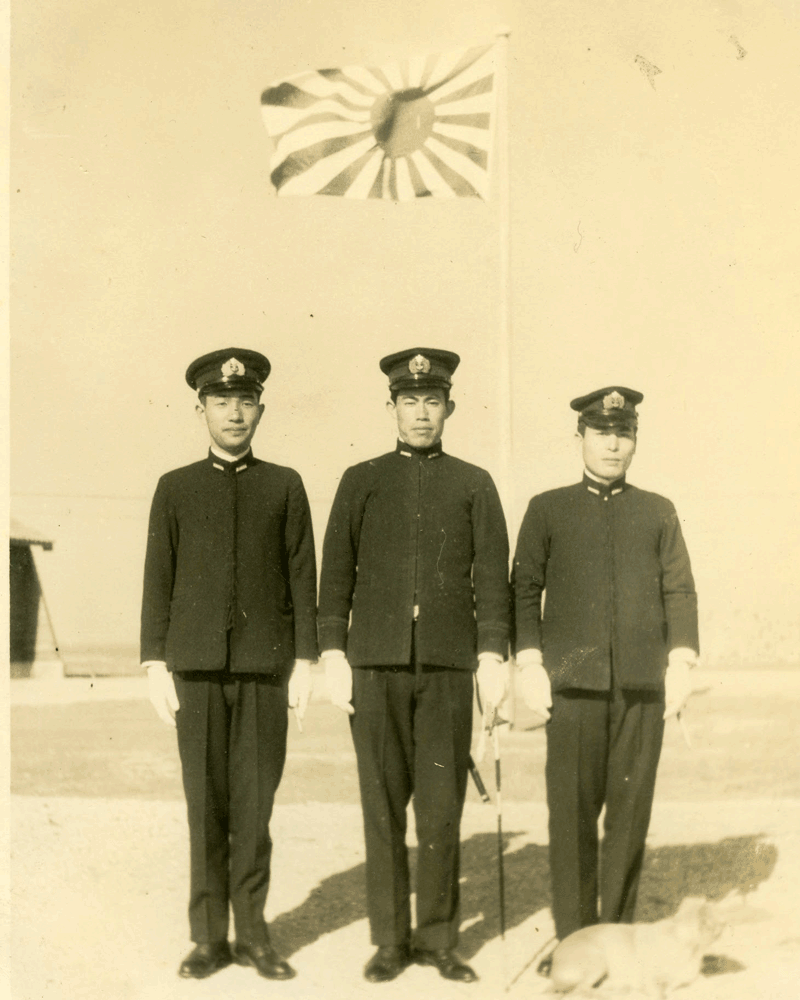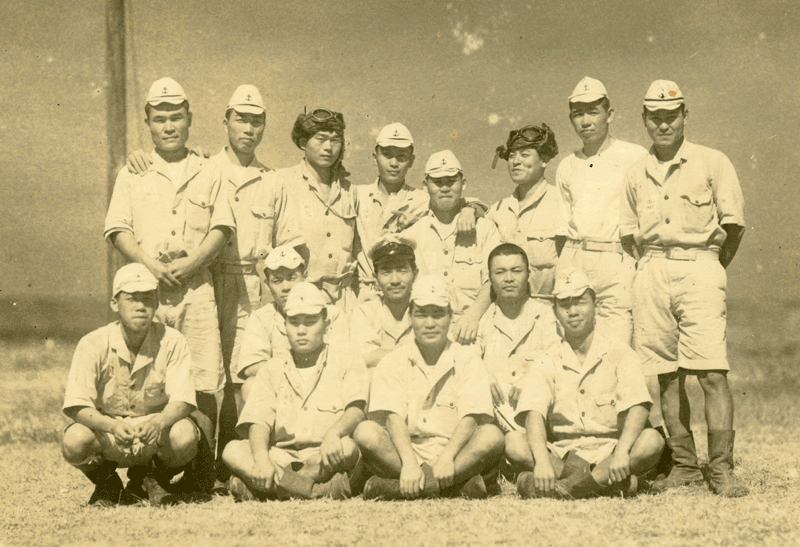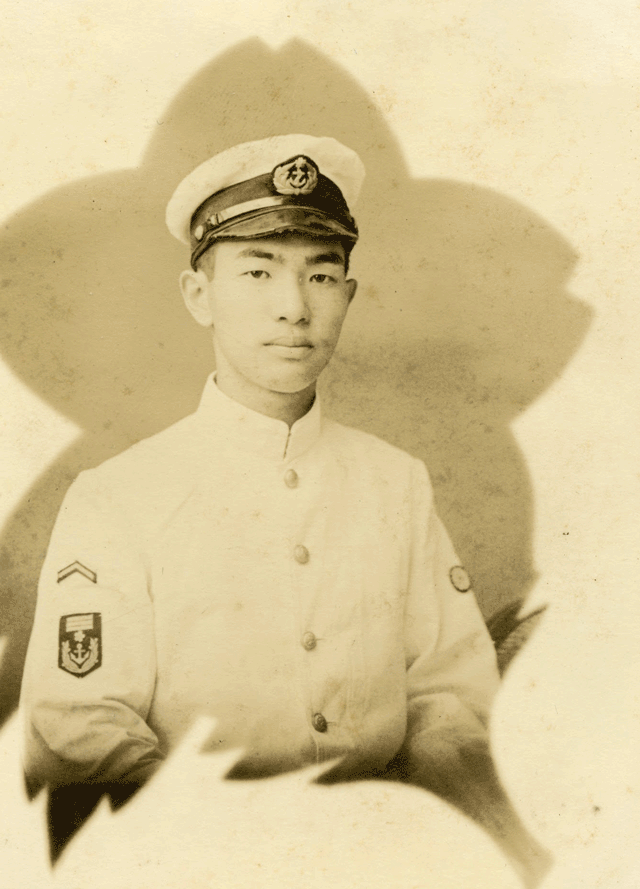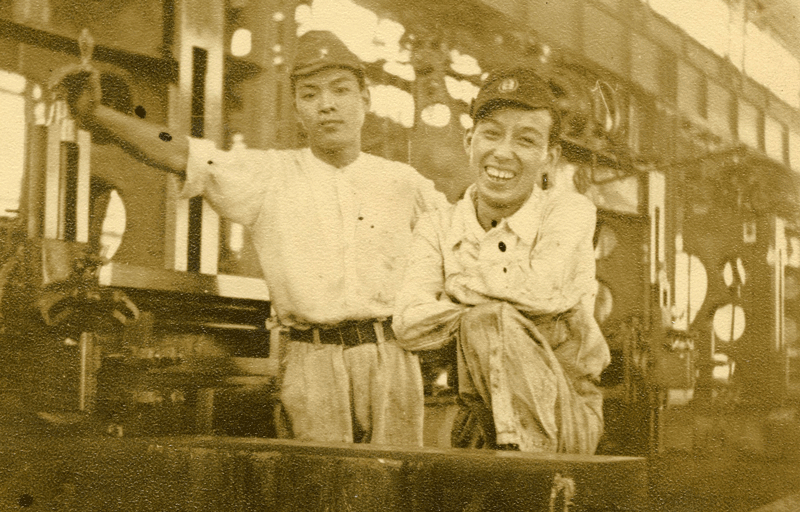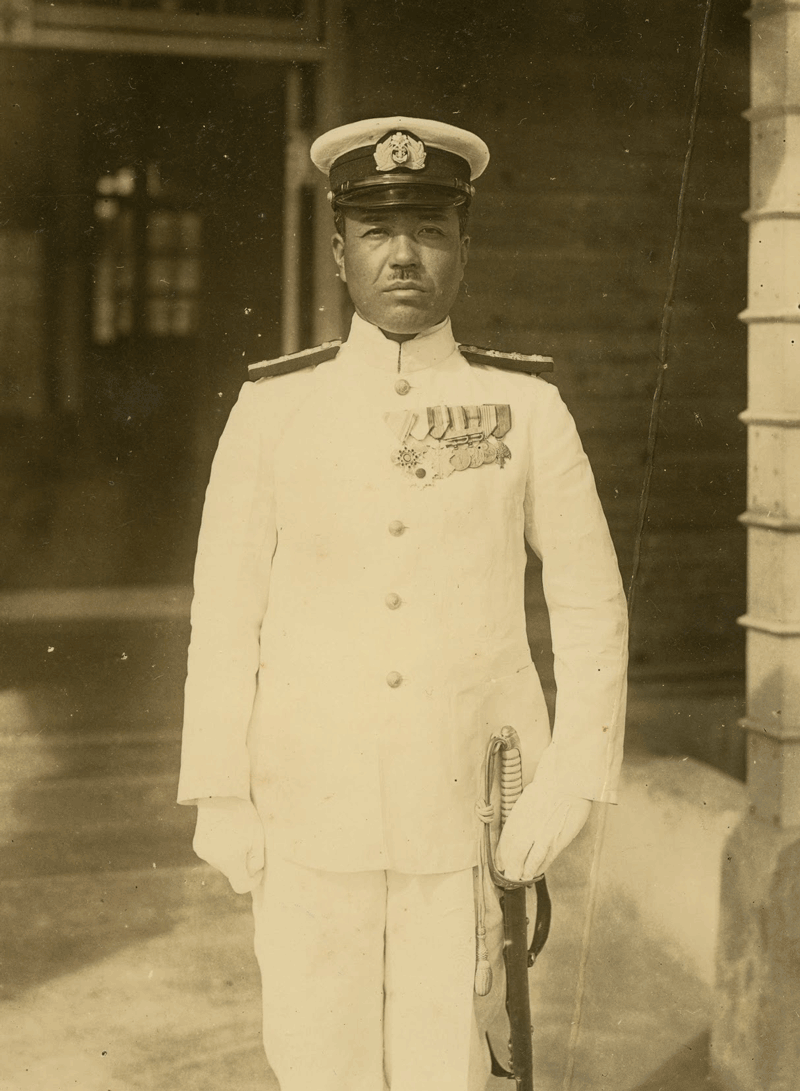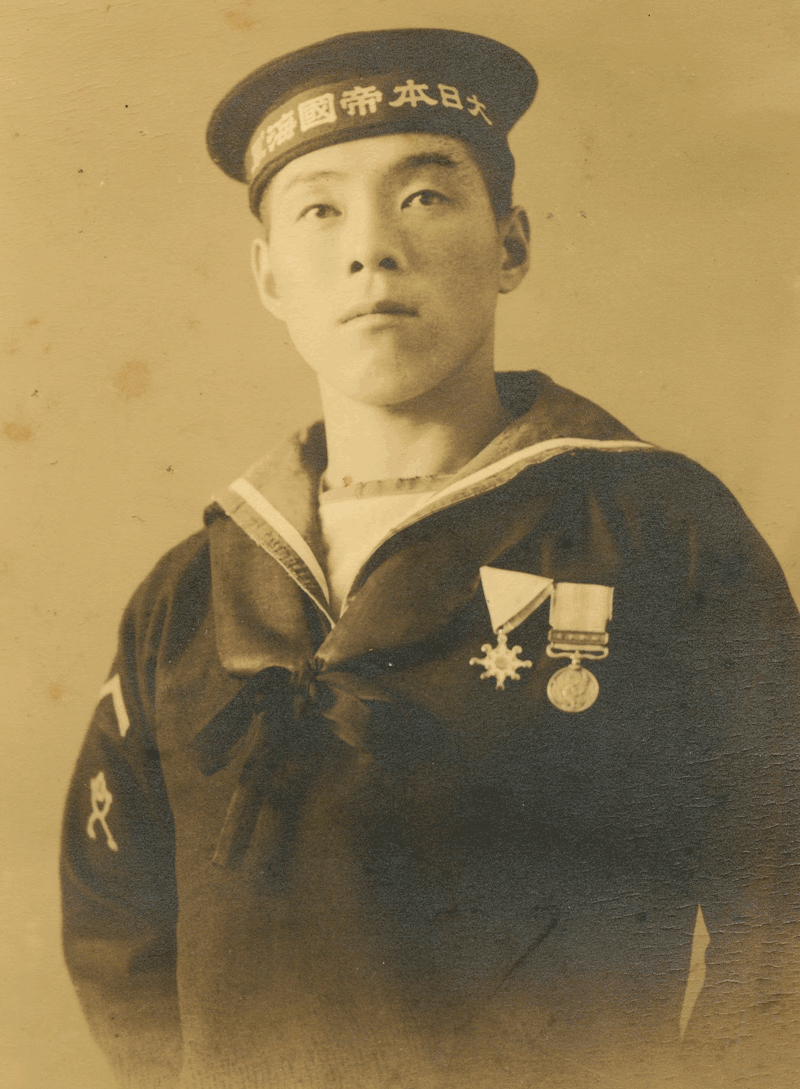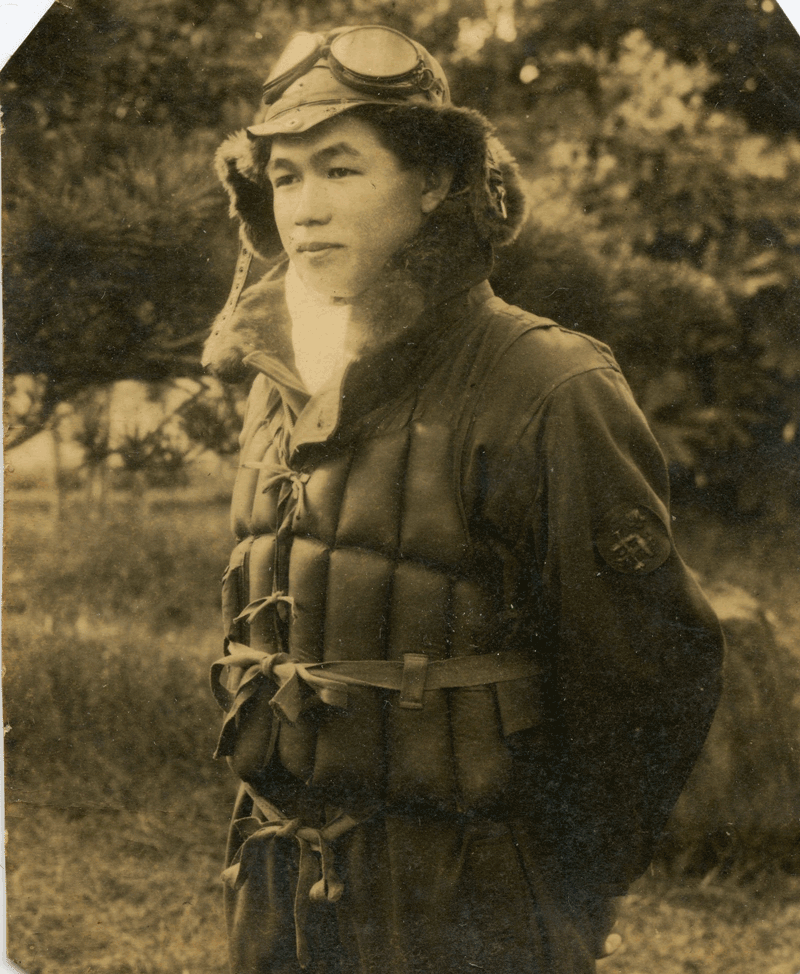Traveling back in history through a collection of photos that crossed an ocean – and generations.
Pictures courtesy of Bruce Bridges
Earlier this year, we received a mail from Bruce Bridges, a reader in the United States whose father, Robert L. Bridges, had been stationed in Japan during, and after, World War II. He was in the Navy, aboard the USS Missouri when the surrender was signed, and was a military policeman in Japan before moving on to Korea and Vietnam.
As Bridges explains, his father “was in three wars total and didn’t talk a lot about his time in service.” However, some of the things he did bring back and share were collections of Japanese handmade goods – and photographs. Some pictures reveal soldiers and cadets in formal groups, posed stiffly and at attention, while others show some of the same figures in more casual poses, with ready smiles and laughter on their faces. Rarer among the time-worn prints are images of women – alone, or with fathers, brothers, or husbands.
As a child growing up in the state of Mississippi, Bridges recalls the photograph albums as things that were always around, windows into other lives and other times that became strangely familiar. It was only after the death of his father several years ago that Bridges began to see the photos from a different perspective. “I had scanned them a long time before, and had my own digital versions for some time. A few years after he died, though, I ran across them and started wondering about the families that the photos originally belonged to. I’ve often wondered how I could reconnect families with them but none of my efforts were ever successful.”
Of course, the first question that comes to mind when looking at what must have been pictures of sons, brothers, fathers, long-lost loves or wives is “How?” How would an MP come into possession of books of photos like these? Bridges hazards a guess as to how, and one reason why: “I’ve always assumed that in post-war Japan people were probably selling everything just to eat and maybe this was a collection he came across. He was an amateur photographer later and I think this was an early indication of his interest in that.”
The same possibility is also suggested by Professor Hiraku Shimoda of Waseda University, when we asked him to speculate about how Bridges would have brought the photos back to the US many years later. “Many GIs who were a part of the US Occupation sought out all kinds of souvenirs during their tour of duty in Japan. As a result, ordinary, everyday goods of all sorts were put up for sale. So I’m not at all surprised that family photos and such were among the wares.” Shimoda adds that it is still possible to buy personal snapshots and wedding photos that date back to the postwar period from vendors around the country.
We’ve decided to publish a selection of these photos in our August issue, then, for a few reasons. One, like Bridges, we hope that there might be a chance to reunite some families with these pictures. Another is that they offer a chance to think about experiences of these people who lived just a few generations back. And finally, as this the time of year when Japan remembers the events that led up to the end of World War II, we would like to reflect on the lives of the people – and perhaps imagine the spirit of the country – that we can see in these frozen moments.
You can see the rest of the photo album at tinyurl.com/photosfromWWII.

